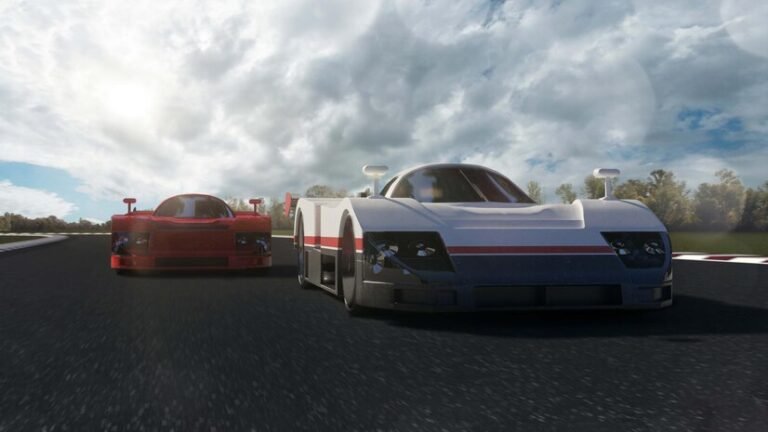During the wwii f1 ferrari’s got stuck in nj what comes to mind when you think of Ferrari? Most likely, it’s roaring engines, luxury design, or the thrill of Formula 1. But did you know Ferrari’s road to its famed reputation involved a curious detour in New Jersey during World War II? Yes, you read that right—New Jersey.
but also a pivotal moment that shaped Ferrari’s future in America. Buckle up, Ferrari fans and car enthusiasts, because we’re taking a deep dive into the fascinating backstory of how “F1 Ferrari’s got stuck in NJ during WWII” and why it’s a tale worth retelling.
Ferrari’s Early Years
To understand how Ferrari found itself on American soil in such an unusual situation, it’s essential to rewind to its origins. Enzo Ferrari founded Auto Avio Costruzioni (which would later become Ferrari S.p.A.) in 1939 in Modena, Italy, with a single-minded vision for motorsport excellence.
His early designs were rooted in performance cars, and Ferrari was already establishing a reputation for engineering prowess. However, the company, much like the world around it, soon faced an unprecedented disruption—World War II.
The Impact of WWII on Ferrari
The war had a profound impact on Italy’s automotive industry. Ferrari’s initial factory in Modena was repurposed for wartime production, manufacturing machine tools instead of race cars. Amidst bombings and widespread destruction, Ferrari took decisive action to relocate the factory to Maranello in 1943—a move that would eventually become a key chapter in the brand’s legacy.
However, resources were scarce, and the industry’s focus had completely shifted. For a company centered on groundbreaking engineering and performance, WWII was both a physical and metaphorical detour. The post-war environment became fertile ground for innovation, but it also required Ferrari to rebuild from near-scratch.
The Journey to America
Once WWII ended, opportunities began to emerge. The late 1940s brought an economic recovery, and Ferrari was ready to focus on its dream of creating top-tier performance cars. By now, Ferrari was known in Europe for winning races and pushing automotive boundaries, but the marque had yet to make an impact internationally.
America, with its burgeoning car culture, presented the ultimate opportunity. Exporting cars to the United States wasn’t just about opening a market—it was about claiming a stake in the most influential auto landscape of the 20th century.
Ferrari’s plan was simple on paper but complex in execution. Several luxury performance cars were loaded onto a ship destined for the U.S., aiming to appeal to wealthy American buyers who sought more than just transportation—they craved status symbols.
But what should have been an exciting next step in the Ferrari story was soon interrupted.
Ferrari’s New Jersey Roadblock
En route to its American debut, the Ferrari shipment faced an unexpected snag upon docking in New Jersey. Whether it was due to bureaucratic delays, customs challenges, or logistical mishaps, these prized Italian cars found themselves stuck in limbo.
What complicated the matter was the nascent state of international shipping logistics at the time. Documents got lost, cargo was misfiled, and, in some cases, authorities were unsure how to classify these high-performance vehicles. After all, Ferrari wasn’t yet the household name it is today.
While this delay resulted in frustration for Enzo Ferrari and his team, it inadvertently created buzz. Stories of exotic, high-end Italian race cars trapped in the U.S. circulated among enthusiasts. This notoriety may have been unintended, but it worked in Ferrari’s favor by stoking intrigue among American car aficionados.
The Aftermath and Impact on the U.S. Market
Once the customs hurdles were cleared, the cars finally reached their intended recipients in America. Despite the delay, the vehicles’ arrival marked the beginning of Ferrari’s long-lasting romance with the U.S. market. The mystique created by the New Jersey incident fueled excitement and a desire to own these rare, European masterpieces.
For Ferrari, the U.S. became a key market that would go on to play a dominant role in establishing the brand globally. American car culture welcomed Ferrari with open arms, solidifying its reputation as a luxury and performance icon.
A Legacy Cemented in History
Today, Ferrari’s influence in America is undisputed. From dominating the Formula 1 circuit to being a symbol of success and aspiration, Ferrari’s presence in the U.S. reflects a legacy that began with Enzo Ferrari’s dream—and a little hiccup in New Jersey.
This “WWII-era adventure” of Ferraris being stuck in NJ is more than a quirky story from the past. It’s a reminder that even the most iconic brands face unexpected roadblocks on their journeys to greatness.
What This Means for Ferrari Fans and Automotive History
Whether you’re an ardent Ferrari fan or simply enjoy uncovering hidden automotive gems, this story offers a window into the challenges and triumphs of building an enduring legacy. It also speaks volumes about how unexpected events can shape cultural narratives in unforeseen ways.
